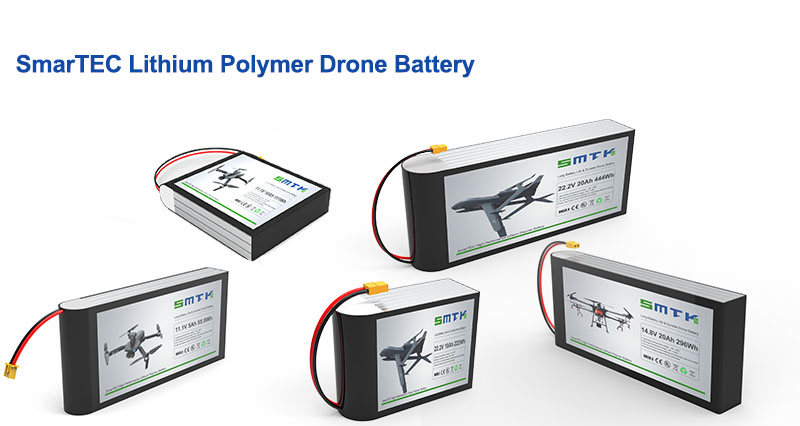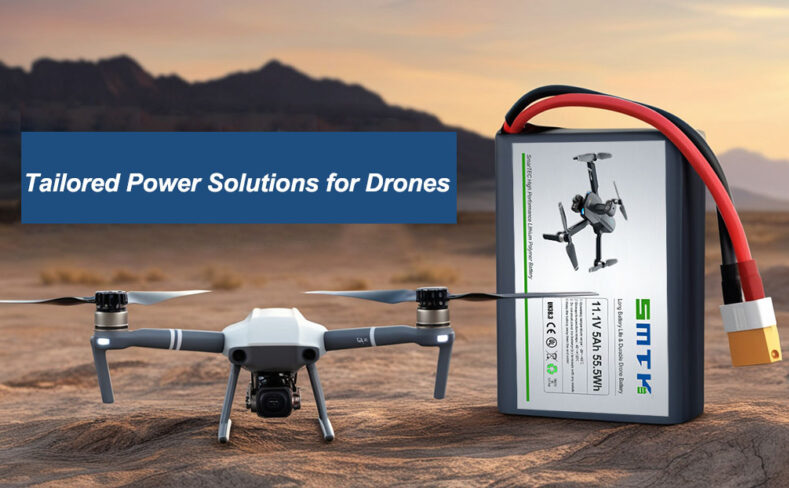Drones, or Unmanned Aerial Vehicles (UAVs), have transformed industries ranging from aerial photography and agriculture to delivery services and more. A key component that powers these innovative machines is the battery. Understanding the types of drone batteries, their life expectancy, maintenance, and charging tips can make a significant difference in performance and efficiency. This comprehensive guide covers everything you need to know about drone batteries, helping you choose and care for your UAV battery for optimal drone performance.
Introduction to Drone (UAV) Batteries
Drone batteries are the powerhouse of UAVs, enabling them to perform tasks that range from simple flying to high-tech surveillance and mapping. A battery’s efficiency and longevity directly impact a drone’s flight time, speed, and reliability. Investing time in understanding these components can help users select the right battery, prolong battery life, and enhance drone performance. With advancements in drone technology, batteries have become more efficient, but they also require more care and knowledge to maximize their effectiveness.
Types of Drone Batteries
Not all drone batteries are created equal. Different types of batteries offer various benefits, drawbacks, and ideal use cases. Let’s examine the main types available in the market.
1)Lithium-Polymer (LiPo) Batteries
LiPo batteries are the most popular choice for drones due to their lightweight design and high energy density. They allow drones to stay airborne longer and deliver better performance in terms of speed and agility.
– Advantages: Lightweight, high discharge rate, and excellent power output.
– Drawbacks: Sensitive to temperature changes and prone to puffing (swelling) if not maintained properly.

Lithium Polymer drone battery
2)Lithium-Ion (Li-Ion) Batteries
Li-Ion batteries are known for their energy capacity and are commonly used in commercial drones. They tend to last longer than LiPo batteries but are generally heavier.
– Advantages: High energy density and longer life cycle.
– Drawbacks: Heavier than LiPo batteries, which can affect drone agility and flight time.
3)Nickel-Metal Hydride (NiMH) Batteries
NiMH batteries are less common in drones today, but some users still prefer them for specific applications due to their stability and lower sensitivity to temperature fluctuations.
– Advantages: More stable, safer, and less prone to overheating.
– Drawbacks: Lower energy density and generally bulkier, resulting in shorter flight times.
How Drone Battery Capacity Works
Battery capacity, often measured in milliampere-hours (mAh), determines how long a drone can fly on a single charge. Higher mAh means more extended flight time, but it also usually means a larger and heavier battery. Understanding the balance between capacity and weight is crucial since a heavier battery might reduce a drone’s maneuverability and speed. Drones designed for high-energy applications, such as racing or filming, require batteries with a higher mAh rating.
Factors Influencing Drone Battery Life
Several variables impact how long a drone battery will last during a flight. By being aware of these factors, drone operators can plan better and improve battery performance.
Drone Weight and Payload
The weight of the drone and any additional payload, like a camera or sensors, can significantly reduce flight time. More weight demands more power from the battery, leading to quicker drain. Choosing a battery suited for your drone’s weight class and intended payload can help optimize performance.
Flying Speed and Altitude
Flying at higher speeds or altitudes generally consumes more battery power. This is particularly relevant in drone racing or when drones are used for mapping high-altitude terrain.
Weather Conditions
Extreme temperatures, wind, and humidity levels can impact battery life. Cold weather tends to decrease battery efficiency, while very high temperatures can lead to overheating and potential battery damage.
Charging and Discharging Basics for Drone Batteries
Proper charging and discharging practices are essential to prolonging a drone battery’s life. Here are some best practices to keep in mind:
-Charge Slowly: Avoid using fast-charging methods unless necessary, as they can degrade battery life over time.
-Avoid Full Discharge: Discharging the battery completely can harm its cells. It’s recommended to keep the charge level between 20% and 80% for maximum longevity.
-Store at a 50% Charge: For long-term storage, keep the battery at around 50% charge to prevent degradation.
Safety Tips for Handling Drone Batteries
Safety is paramount when handling drone batteries. Since these batteries are powerful and can be hazardous if mishandled, it’s essential to follow these guidelines:
-Inspect Regularly: Check for any signs of damage, puffing, or leakage. Damaged batteries can be dangerous and should be replaced immediately.
-Use Approved Chargers: Always use the manufacturer-recommended chargers and avoid overcharging, which can cause overheating.
-Store Properly: Keep batteries in a cool, dry place away from direct sunlight or high temperatures to prevent swelling or fire risks.
How to Extend Drone Battery Life
By adopting some straightforward practices, you can extend your drone battery’s life, reducing replacement frequency and saving money in the long run.
-Maintain Moderate Temperatures: Avoid flying in extreme temperatures and try to store batteries at room temperature.
-Reduce Weight and Avoid Aggressive Flying: Lighter drones consume less power, and reducing rapid accelerations or hard turns can save battery life.
-Charge and Discharge Regularly: Regular use, without completely depleting the battery, can keep it functioning at optimal capacity for longer.
Drone Battery Maintenance Tips
Proper maintenance of drone batteries ensures they remain efficient and safe for use. Here’s a breakdown of key maintenance tips:
-Clean Battery Terminals: Dust and debris can accumulate on terminals over time, so clean them regularly for proper connection.
-Monitor Voltage Levels: Use a battery monitor to check voltage regularly, especially for LiPo batteries.
-Regular Inspections: Checking for swelling, leakage, or any physical damage can prevent accidents and prolong battery life.
Replacing a Drone Battery
When a battery shows signs of wear or reduced capacity, it’s time to consider a replacement. Here’s how to go about it:
-Determine Compatibility: Make sure the replacement battery matches your drone model specifications.
-Check Manufacturer Recommendations: Using recommended or branded batteries ensures safety and optimal performance.
-Dispose of Old Batteries Properly: Follow local guidelines for battery disposal, as drone batteries can be hazardous to the environment.
Selecting the right battery involves more than just matching specs. Here’s what to consider:
Battery Type: LiPo batteries are ideal for performance, while Li-Ion batteries are better for endurance.
Capacity and Flight Time: Assess the mAh rating based on your usage needs and weight requirements.
Safety Features: Choose batteries with built-in protections against overcharging and overheating.
The SmarTEC Drone Battery stands out as a powerful, reliable choice for both hobbyists and professionals looking to enhance their drone’s performance. With its advanced energy capacity, fast charging capabilities, and durable design, SmarTEC delivers extended flight times and dependable power, even in challenging conditions. Designed with innovative safety features to prevent overheating and overcharging, this battery not only boosts performance but also prioritizes safety and longevity. Whether you’re capturing aerial footage, surveying land, or just enjoying recreational flying, the SmarTEC Drone Battery provides the endurance and efficiency needed to get the most out of every flight.

